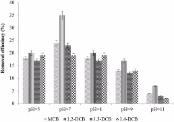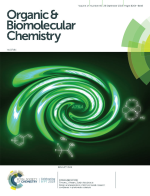
Comparative study of ferrate and thermally activated persulfate treatments for removal of mono- and dichlorobenzenes from groundwater
The paper authored by
P. Dobosy,
C. É. Vizsolyi,
I. Varga,
J. Varga,
G. Láng and
G. Záray
is published in Microchemical Journal (2018, vol. 136, pp. 61–66).
Abstract:
The removal of mono- and dichlorobenzenes from model solutions containing four chlorobenzene compounds separately or all four mixed, as well as mixed but with the addition of groundwater matrix was studied applying ferrate and thermally activated persulfate treatments. The concentration of target molecules were determined by gas chromatographmass spectrometer system following the enrichment of analytes by solid phase micro-extraction. At optimized experimental conditions and with the same concentration of oxidative agents, the removal efficiency values were the highest for the 1.2-dichlorobenzene (1.2-DCB) and monochlorobenzene (MCB) in case of ferrate and persulfate treatment, respectively. At nearly the same molar ratios, the persulfate treatments in comparison to the ferrate technology resulted in a higher average removal efficiency for the four target molecules in the model solutions (39 vs. 19%). However, in the presence of groundwater matrix with a given bicarbonate and chloride ion content, the average removal efficiency values reached only 14% for both treatment procedures. This means that the persulfate treatment is more sensitive to the presence of interfering ions existing in groundwater.
